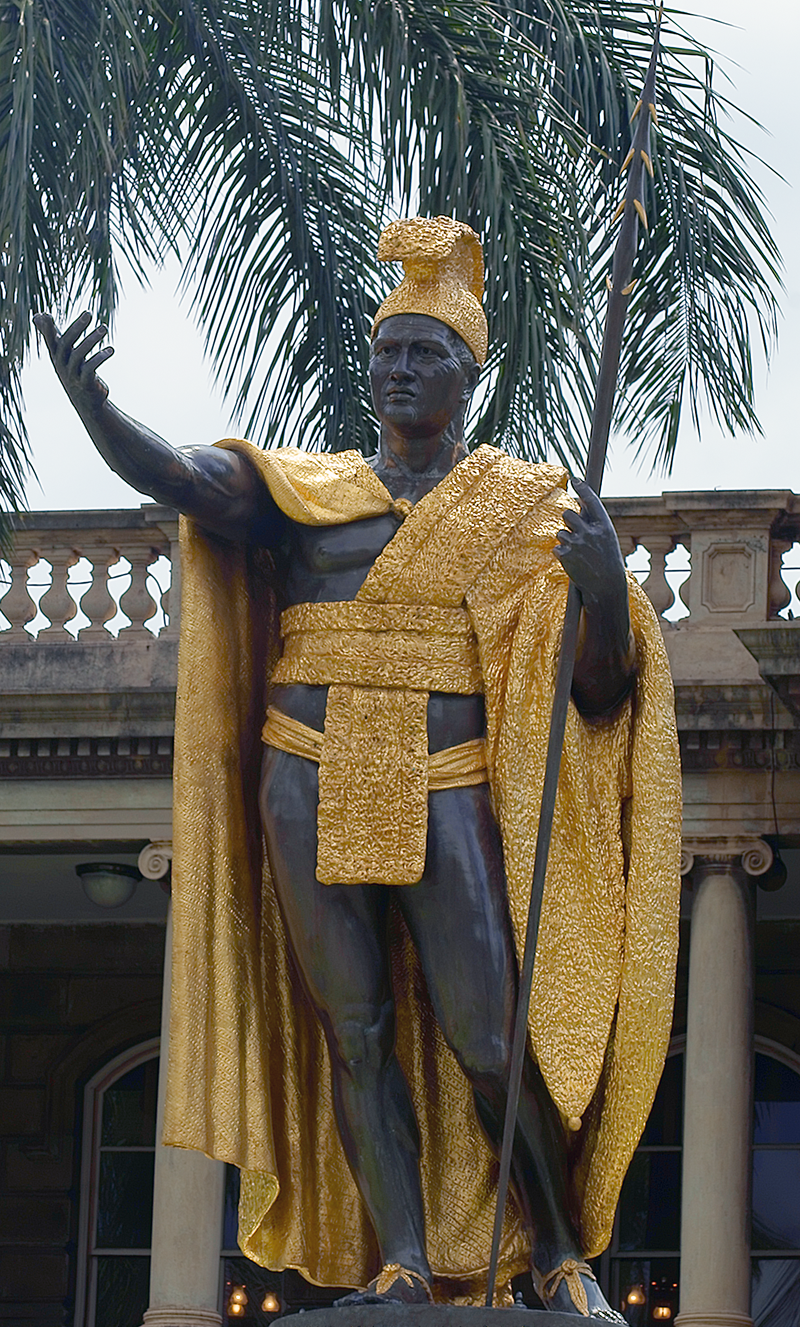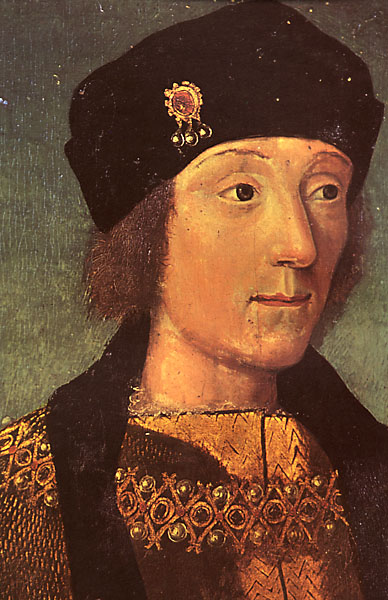© Unofficial Royalty 2024

King Charles I of England; Credit – Wikipedia
January 30, 1628 – Birth of George Villiers, 2nd Duke of Buckingham, favorite of King Charles II of England
George Villiers, 2nd Duke of Buckingham and his brother Lord Francis Villiers were brought up in the household of King Charles I with Charles I’s sons, the future King Charles II and the future King James II. George and his brother Francis actively supported and fought with the Royalists during the English Civil War. After the death of his brother in a battle near Kingston upon Thames, George Villiers fled England and took refuge like many other royalists in the Netherlands. After the restoration of King Charles II, George held several positions including Lord Lieutenant of the West Riding of Yorkshire, Minister of State, and Master of the Horse. His endeavor to influence English politics was stymied by the Lord Chancellor Edward Hyde, 1st Earl of Clarendon and in 1667, George took an active part in the overthrow of Hyde. He then played an important role in the group of five royal advisors that called itself the CABAL, formed from the letters of its members’ names. George was one of the Restoration rakes which included John Wilmot, 2nd Earl of Rochester, Sir Charles Sedley, and Charles Sackville, 6th Earl of Dorset. Following the example of King Charles II, they distinguished themselves in drinking, sex, and witty conversation.
Unofficial Royalty: George Villiers, 2nd Duke of Buckingham
January 30, 1649 – King Charles I of England is beheaded for treason and other high crimes on a scaffold outside the Palace of Whitehall in London, England; buried at St. George’s Chapel at Windsor Castle in Windsor, England
During the English Civil War, Charles I was accused of treason against England by using his power to pursue his personal interest rather than the good of England. A High Court of Justice was appointed to try Charles for high treason in the name of the people of England. He was declared guilty and sentenced to death. On the day of his execution, Charles walked the short distance from St. James’ Palace to the Palace of Whitehall where a scaffold had been built outside the Banqueting House. From the first floor of the Banqueting House, Charles stepped onto the scaffold from a window. Before his execution, Charles delivered a speech. After a conversation with the executioner which was recorded by an eyewitness (see the article about the execution below), Charles stretched out his hands, and the executioner, with one blow, severed his head from his body.
Unofficial Royalty: Execution of Charles I, King of England
Unofficial Royalty: King Charles I of England
January 30, 1730 – Death of Peter II, Emperor of All Russia in Moscow, Russia; buried at the Cathedral of the Archangel in the Moscow Kremlin
In 1725, Peter I (the Great), Emperor of All Russia died at the age of 52 from a bladder infection without naming a successor. A coup arranged by Prince Alexander Menshikov proclaimed Catherine, Peter’s second wife, the ruler of Russia. Catherine I’s reign was only two years and even before her death, it was clear that the inheritance of Peter the Great’s grandson Peter could not be denied. Menshikov began to see this during the end of Catherine I’s reign. Through his efforts, Peter was named Catherine’s heir apparent, even though Catherine had two daughters of her own. In 1727, 43-year-old Catherine I, Empress of All Russia died of tuberculosis and 11-year-old Peter became Emperor of All Russia. On a frigid day, Peter II attended a parade. When he returned to the palace, he had a fever that developed into smallpox. On January 30, 1730, the delirious Peter ordered his sleigh to be readied so he could go see his sister Natalia who had died a little more than a year earlier. Fourteen-year-old Peter died a few minutes later.
Unofficial Royalty: Peter II, Emperor of All Russia
January 30, 1757 – Birth of Luise of Hesse-Darmstadt, Grand Duchess of Saxe-Weimar-Eisenach, wife of Karl August, Grand Duke of Saxe-Weimar-Eisenach, in Berlin, Kingdom of Prussia, now in Brandenburg, Germany
Full name: Luise Auguste
Luise was the daughter of the daughter of Ludwig IX, Landgrave of Hesse-Darmstadt and Caroline of Zweibrücken. In 1775, she married Karl August, Grand Duke of Saxe-Weimar-Eisenach and the couple had four children. The arranged marriage was purely dynastic and there was not much love between the two. During the Napoleonic Wars, when French forces advanced on Weimar in 1806, Luise stood firm and remained there while most of the family fled or were off fighting in the war. She personally stood up to Napoleon himself and to protect Weimar and its people from the fighting. Her efforts were successful, and Weimar remained mostly untouched. Several years later, at the Congress of Vienna in 1815, Luise’s efforts ensured that the duchy did not have to cede any territory, and was instead elevated to a Grand Duchy.
Unofficial Royalty: Luise of Hesse-Darmstadt, Grand Duchess of Saxe-Weimar-Eisenach
January 30, 1815 – Birth of Sir William Jenner, 1st Baronet, Queen Victoria’s Physician-in-Ordinary from 1861 – 1890, in Chatham, Kent, England
Jenner took an interest in pathology, particularly in typhus and typhoid fever. Through his work, Jenner confirmed in 1849 that typhus and typhoid fever were two distinct diseases with very different causes. His work on the subject earned him an international reputation and made a huge impact on public health. With the importance of Jenner’s pathology work, his career quickly progressed. He taught pathological anatomy at the University College of London and became a staff doctor at University College Hospital. In 1861, his fame reached Queen Victoria who appointed him her Physician-Extraordinary. Jenner was one of the doctors who treated Prince Albert during his final illness. Despite his failure to save Albert, Jenner made a favorable impression on Queen Victoria, who appointed him her Physician-In-Ordinary in 1862. Queen Victoria and Jenner became lifelong friends, and in 1868, she created Jenner a Baronet. In December 1878, Jenner went to Darmstadt to attend Princess Alice, Grand Duchess of Hesse and by Rhine, Queen Victoria’s daughter who had become ill with diphtheria while nursing her family, also ill with the disease. Sadly, Alice died seventeen years to the day of her father’s death. In 1890, Jenner was forced to retire from his position as Physician-In-Ordinary due to ill health. He went to live at his estate, Greenwood in Durley, Hampshire, England, where he died at the age of 83.
Unofficial Royalty: Sir William Jenner, 1st Baronet
January 30, 1889 – Death by suicide pact of Crown Prince Rudolf of Austria and Baroness Mary von Vetsera at Mayerling, Austria; Rudolf was buried at the Capuchin Church in the Imperial Crypt in Vienna, Austria; Mary was secretly buried in a cemetery in Heiligenkreuz, Austria
Crown Prince Rudolf was the only son of Franz Joseph, Emperor of Austria and his wife Elisabeth of Bavaria (Sisi). Rudolf married Princess Stéphanie of Belgium, daughter of King Leopold II of the Belgians, and they had one daughter. The marriage was happy at first, but shortly after the birth of their daughter, the relationship between Stéphanie and Rudolf began to deteriorate. Rudolf likely infected Stéphanie with a sexually transmitted disease, causing her to be infertile and unable to provide a male heir for the Austrian throne. Both Stéphanie and Rudolf began affairs with other people in the following years and intermittently spoke of divorce. On January 30, 1889, at Mayerling, a hunting lodge in the Vienna Woods, 30-year-old Rudolf shot his 17-year-old mistress Baroness Mary Vetsera, and then shot himself in an apparent suicide plot.
Unofficial Royalty: Crown Prince Rudolf of Austria
Unofficial Royalty: Baroness Mary von Vetsera, Mistress of Crown Prince Rudolf of Austria
January 30, 1894 – Birth of Tsar Boris III of Bulgaria in Sofia, Bulgaria
Full name: Boris Klemens Robert Maria Pius Ludwig Stanislaus Xaver
Boris was the Tsar of the Kingdom of Bulgaria from 1918 until his death. In 1930, he married Princess Giovanna of Italy and the couple had two children. With the outbreak of World War II, Boris tried to retain Bulgaria’s neutrality. After the threat of a German invasion, and with the promise of regaining territory formerly ceded to Greece, Boris signed a treaty aligning Bulgaria with the Axis powers. In 1941, Boris signed into law the Law for Protection of the Nation, which imposed restrictions on Jewish Bulgarians. Despite signing the law, Boris helped to prevent the forced deportation of the Bulgarian Jews. In August 1943, Boris was summoned to a meeting with Hitler, who wanted Boris to deport Bulgarian Jews, and to declare war on Russia – both of which Boris strongly refused to do, making Hitler furious. Just weeks later, 49-year-old Boris died. The circumstances of his death remain mysterious, with many believing that Boris had been poisoned because of his refusal to concede to the demands of the Nazis.
Unofficial Royalty: Tsar Boris III of Bulgaria
January 30, 1953 – Death of Ernst August III of Hanover, Duke of Brunswick at Marienburg Castle in Hanover, Germany; buried in front of the Mausoleum in Herrenhausen Gardens in Hanover, Germany
The son of Ernst August II, Crown Prince of Hanover and Princess Thyra of Denmark, Ernst August was the last reigning Duke of Brunswick, abdicating on November 8, 1918. He was also the pretender to the throne of Hanover. In 1913, Ernst August married Princess Viktoria Luise of Prussia, the only daughter of Wilhelm II, German Emperor, King of Prussia. The wedding was one of the last large gatherings of European royalty before World War I began the following year, attended by 1,200 guests. The couple had five children. After his abdication in 1918, Ernst August and his family were able to remain in Hanover. He lived his remaining years at his various properties, including Cumberland Castle in Gmunden, Austria, Marienburg Castle in Hanover, Germany, and Blankenburg Castle in Harz, Germany. Ernst August III of Hanover, the last Duke of Brunswick died at the age of 66.
Unofficial Royalty: Ernst August III of Hanover, Duke of Brunswick
January 30, 1962 – Birth of King Abdullah II of Jordan in Amman, Jordan
King Abdullah II of Jordan is the eldest son of King Hussein I of Jordan and his second wife Antoinette Gardiner (Princess Muna). In 1993, Abdullah married Rania al-Yassin and the couple had four children. On February 7, 1999, Abdullah became King of the Hashemite Kingdom of Jordan, upon the death of his father. Just two weeks earlier, King Hussein had stripped his brother Prince Hassan of the title of Crown Prince and named Abdullah as his successor. King Abdullah II has continued his father’s legacy, working toward peace in the region and making the welfare of the Jordanian people a top priority.
Unofficial Royalty: King Abdullah II of Jordan
January 30, 1968 – Birth of King Felipe VI of Spain at the Nuestra Señora de Loreto Clinic in Madrid, Spain
Full name: Felipe Juan Pablo Alfonso de Todos los Santos de Borbón y de Grecia
King Felipe VI is the only son of King Juan Carlos of Spain and his wife Queen Sofia, born Princess Sophia of Greece. He is a descendant of Queen Victoria through both his father and his mother. In 1992, Felipe was a member of the Spanish Olympic Sailing Team at the Barcelona Summer Olympics. He was the flag bearer at the Opening Ceremonies and his Soling Class sailing team finished in sixth place. In 2004, Felipe married journalist Letizia Ortiz Rocasolano and the couple has two daughters. Felipe became King of Spain upon the abdication of his father in 2014.
Unofficial Royalty: King Felipe VI of Spain
January 30, 1993 – Death of Alexandra of Greece and Denmark, Queen of Yugoslavia in Sussex, England; initially buried in the Royal Burial Grounds at Tatoi Palace in Greece with her parents, in 2013, her remains were returned to Serbia where they were re-buried in the Royal Mausoleum at Oplenac in Serbia
Alexandra was the posthumous child of King Alexander of Greece who had died five months before her birth from septicemia caused by an infected monkey bite, and Aspasia Manos. In 1944, she married King Peter II of Yugoslavia who was living in exile in London, England, and the couple had one son. The following year, the Yugoslav monarchy was abolished and King Peter II was formally deposed. The marriage was increasingly strained, with constant struggles to find sources of income and Peter’s numerous affairs. Alexandra and Peter eventually went their separate ways. He settled permanently in the United States while she returned to her mother’s home in Venice, Italy. After the death of her mother, Alexandra moved to the United Kingdom and would live there until her death, from cancer at the age of 72.
Unofficial Royalty: Alexandra of Greece and Denmark, Queen of Yugoslavia
This article is the intellectual property of Unofficial Royalty and is NOT TO BE COPIED, EDITED, OR POSTED IN ANY FORM ON ANOTHER WEBSITE under any circumstances. It is permissible to use a link that directs to Unofficial Royalty.


















